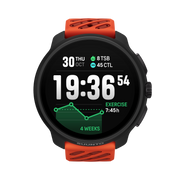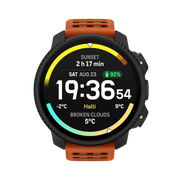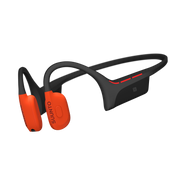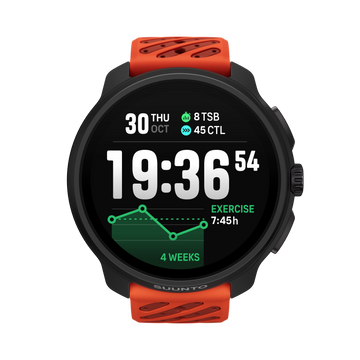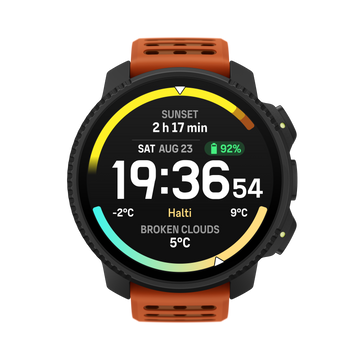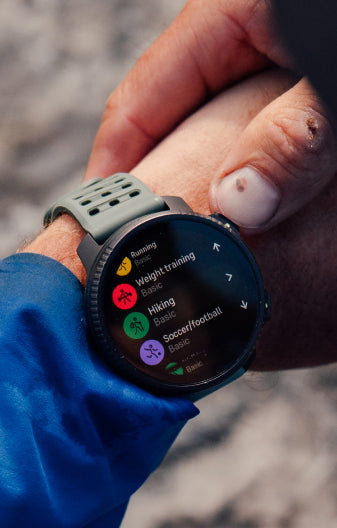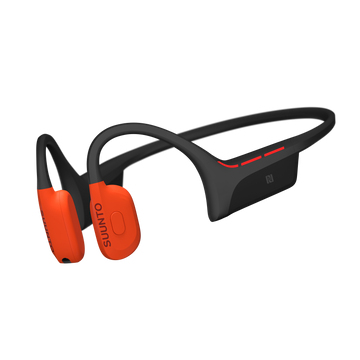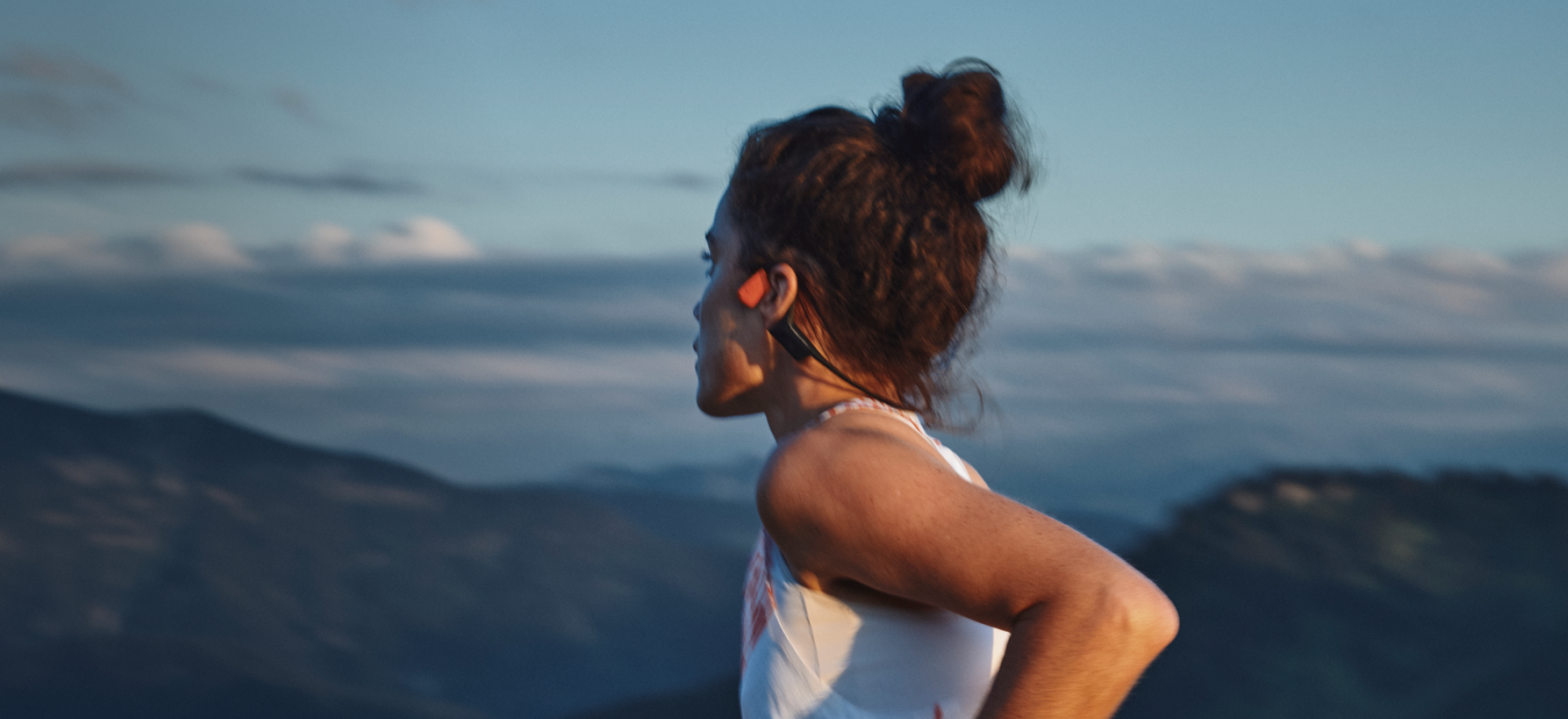

Suunto Blog

Diving in the abandoned Bell Island mine
It’s the Royal Canadian Geographical Society’s Expedition of the Year – the Bell Island Mine Dive. Suunto ambassador Jill Heinerth is part of the team exploring the vast and submerged mine system. Scroll down to learn more and to see images of this incredible dive site.
Canadian underwater explorer and technical diver Jill Heinerth is part of a team now exploring 100 km of long-abandoned mining passages beneath the seafloor of historic Bell Island, which lies off the coast of Newfoundland, Canada “The plan is to open this site for guided cave diving for experienced divers,” Jill says. “Ocean Quest Adventure Resort already boasts the ‘Truk of the North’ in terms of shipwrecks. Couple that with the mine, icebergs and humpback whales, and you have one of the finest diving destinations on the planet.”
“Shipwrecks, the mine, icebergs and humpback whales – one of the finest diving destinations on the planet.”
© Cas Dobbin 2016The plan for the expedition is to establish some primary guidelines for others to follow in the future and to get an idea of what was left in the mine when it was abandoned in 1966. So far, they have found everything from the remains of a miner’s lunch kit, an antique Pepsi Cola bottle, to large pumping equipment and pressure dampeners. “The walls of the mine also tell an important story; miners left behind basic graffiti on the walls such as columns of addition but also painted caricatures in lampblack and white crosses where their colleagues died. It all tells the anthropological story of mining.”
Click for more about Jill Heinerth
© Cas Dobbin 2016The expedition will also explore the island’s staunch local culture and WWII shipwrecks in its harbour. “The high-grade ore coming from the Bell Island mine was critical to shipbuilding during the war,” Jill says. “In 1942, a German U-Boat sunk four ore carriers and blew up the loading wharf on Bell Island. Seventy men died. The four shipwrecks are a part of this project and I will be back to document them in summer.” © Cas Dobbin 2016Engineers have helped the team assess and mitigate risks in the dry part of the mine. The hematite ore walls can collapse simply by leaning against them. Underwater, they have experienced whiteout conditions from inflowing meltwater. The remaining electrical supply line is an entanglement hazard. “We have to employ very prudent and conservative diving protocols to keep everyone safe and that means a big team topside to help in the logistics and safety.”
“It all tells the anthropological story of mining.”
The team includes some of the best technical divers in the world. Most are from Canada, and two others are from Britain and Germany. “The majority of the team is using rebreathers in order to lessen the impact of percolation from the ceiling and to increase warmth and comfort.”
Click for 7 off-season tips for divers
Fierce weather has created problems for the expedition. Blizzards, gales, floods and complete melts have each made things difficult. “The weather made travel across the Tickle to the island impossible on some days and on others we had a river of rushing meltwater flooding the infrastructure we had built for the project. It has not been easy, but we are learning about the forces of nature that will affect further exploration here.”
To follow news about the Bell Island Mine Dive expedition, click here.
Main image: © Cas Dobbin 2016

7 off-season tips for divers
Technical diver and commercial dive supervisor Andy Torbet began exploring the ocean when he was 12 and has been at it ever since. He’s explored sunken cities, elaborate cave systems, deep wrecks and reefs. We caught up with Andy just before he left for an expedition and asked what divers should do to stay dive-ready in the off-season. Here are his 7 off-season tips.
Don’t have an off-season
My personal recommendation for the off-season is not to have one. Even if you dive only very occasionally, and the dives are shallower and shorter than normal or even in a pool, it will help. They will keep those essential skills from fading and make sure your kit is working and familiar. Most diving incidents and accidents happen every year in spring when people come back to diving after taking the winter off. Just a quick dive a few times over the winter will help you stay on top of your game.
Andy explores Finland's Ojamo Mine, where Suunto tests its dive products. © Janne Suhonen “Most diving accidents happen in spring when people come back to diving after taking the winter off.”
Diving’s not physical, but it’s also physical
Diving is not primarily a physical performance sport but it is still physical. Recent medical investigations supported by incident reports have shown that your body is put under pressure even on simple dives and the more physically robust we can make ourselves the safer we are.
Why fitness matters
Ask yourself this: if two divers had identical diving skills, experience and attitude would you rather dive with the fit one or the out of shape one? Which diver do you think would have the greater chance of having a problem and which would you rather count on? Being physically fit can help in nearly all situations and is particularly important in some situations, from finning against a strong current, towing a casualty on the surface or just hauling oneself out of the water in a less than ideal condition. “Being physically fit can help in nearly all situations.”
© Martin Hartley
Take care of your body
It’s worth keeping a basic level of activity going in the off-season to keep you healthy for the new season. I know a lot of divers who go hill walking in winter just to keep their bodies active. But it’s also a time to look at doing some work on those problem areas you’ve been putting off (because you were too busy diving). Perhaps it’s a sore shoulder or a weak knee. Make sure you start the new season in the best shape possible. That way you can dive more, enjoy it more and be capable of more.
Core strength is key
Diving kit is heavy so spend some time working on your strength, and especially core strength. I’ve seen a number of dives cut short because someone injured their lower back getting kitted up. You can spend the spare time in the off-season getting into the habit so when you start diving again these exercises have become part of your routine.“I’ve seen a number of dives cut short because someone injured their lower back getting kitted up.”© Janne Suhonen
Maintain and take stock
I don’t have an off-season, but the winter is less busy so I use that period to service equipment, look at what needs replacing or go over the last year and see what I could can change or improve for next year. It’s an opportunity to take stock and look to improve.
Stay inspired
Keep yourself inspired. The off-season is also a good time to start planning projects or booking those courses you want to get done. Get the paperwork side of things done when the weather is bad to make full use of your time when it’s time to start diving.

Four reasons to try ice diving
Usually freediving events are held in warm and sunny locations like Dean’s Blue Hole in the Bahamas, but not Asikkala on the Rocks. It’s held every March in Finland and involves plunging through a hole in a sheet of ice and diving down into the biting waters beneath. Pure madness, you think? “Not at all,” says organizer Antero Joki, Finland’s top freediver. “It’s a spiritual feeling. It’s not about how deep you go, it’s about the feeling.” Here’re four reasons to give ice freediving a go.
Feeling brave? Jump in in your swimsuit. © Pekka TuuriThe thrill of the cold Despite what you might think, diving in frigid water doesn’t feel terrible once you get past the initial shock. “It’s actually thrilling,” Antero says. “Every time someone overcomes their fear of the cold and goes for it, they come out of the water smiling. Of course you can feel the coldness through your wetsuit, but it’s not bad. You can stay in only for half an hour, but that’s enough to enjoy this incredible underwater experience.”
“Every time someone overcomes their fear of the cold and goes for it, they come out of the water smiling.”
© Pekka Tuuri
The underwater ambience
“It’s hard to describe this; you have to experience it for yourself,” Antero says. “There’s total silence. There’s this twilight light and the ice creates a shadow theater. You can see shadows of the people moving on the surface of the ice. And even though it’s cold, it feels cozy.” It teaches relaxation “It’s always a maximum of 4°C below 10 m so it’s always cold and it’s always dark,” Antero says. “But when you learn to relax in a cold and dark water it means when you freedive in warm water it’s so much easier to be relaxed.”
© Pekka TuuriThe Finnish saunas Before plunging through the ice, Asikkala on the Rocks participants relax in saunas to prepare themselves and then again afterwards to warm up. “The combination of warmth and cold is good for body and mind,” Antero says. “It’s a very relaxing atmosphere.”
MAIN IMAGE: © Pekka Tuuri

7 incredible places to snorkel that you can access from the beach
Here’s one of those vacation bugs: great beaches often have lousy snorkeling. You wander into the sea hoping for pristine waters and a vibrant underwater life and what you get is cloudy visibility thanks to all the sand – and zero fish. But you don’t have to join a boat trip to that ‘hidden’ cove to enjoy great snorkeling. Here are seven beaches you can take both your book – and your fins.
Ayada Maldives
The Maldives is home to some of the best diving and snorkeling around the world; an abundant sea life, clear warm waters and some fantastic beaches as well. Where to stay? We’re biased but last year the Suunto Dive team stayed at Ayada Maldives. The house reef is just a few minutes swim from the beach and home to reef sharks, rays and sea turtles. You’ll love these incredible underwater shots.
© George Karbus
Dean’s Blue Hole, Bahamas
Dean’s Blue Hole is the well known venue for some of the world’s deepest freedives. One of the world’s largest salt water blue holes, it plunges down to 200m just meters from the soft sanded beach. But you don’t need to be a champion freediver like Will Trubridge to enjoy the venue. Diving down to the entrance rim of the blue hole is within reach of most people, while there’s great snorkeling to be had around the cove.
© samovidic/ zooom.at
Goat Island, New Zealand
Let’s be honest, New Zealand is not the first place you’d think of for a beach and snorkel vacation. But as the country’s first marine reserve, Goat Island is a surprisingly awesome and family-friendly venue for sun and sea worshipers. Approximately 90 km north-east of Auckland, the reserve is home to snapper, kingfish, kahawai and jack mackerel. Lobster and crayfish are also common while seals and dolphins are also occasionally spotted.
Okinawa Island, Japan
Move over Great Barrier Reef, Thailand (see # 6) and Bali. If you’re looking for awesome snorkeling within reach of some pristine sandy beaches, head to Japan. We asked freediver Tomoka Fukuda for her recommendations. Unsurprisingly, she went for her home. “The Okinawa ocean is very beautiful,” she says. It’s also home to turtles, manta ray, reef shark and an abundance of other tropical fish. The sushi’s pretty good too.
Noa Noa Island, Philippines
It sounds like it could be the lair of a Bond villain, but there will only be pleasant surprises for those who visit the private island of Noa Noa. An official marine sanctuary, it is surrounded by a 70 hectare tropical reef. It features easy beach access, areas suitable for beginners as well as caves and walls for those adventurous snorkelers who want to explore further.
© noanoaisland.com
Phuket, Thailand
We tried really hard not to mention Thailand but some places you just can’t ignore. Among them are the many beaches in Phuket. Some offer better snorkeling than others. Find beautiful coves and rock formations at Ao Sane beach in the south-west.
Raja Ampat Islands, West Papua, Indonesia
If it’s unparalleled snorkeling and biodiversity you’re after, you’ve come to the right place. The Raja Amapat Islands of West Papua are home to 75% of all known coral species and abundant marine life. There are over 1,000 different species of fish in the reserve. Expect to see sea turtles, sharks and manta rays, and because it’s so remote, very few people. The catch? Access is also remote. There are some incredible beaches with snorkeling just a few steps away, but you may need a boat to get to the beach first. © Trekpedition.Com via Flickr
MAIN IMAGE: © Predrag Vuckovic

Diving between tectonic plates
Underwater explorer and Suunto ambassador Jill Heinerth has dived in breathtaking locations all over the world so when she says one place has the clearest water and is the most inviting it’s worth sitting up and paying attention. It’s time to update your bucketlist. Located in Iceland’s Thingvellir National Park is the most impressive meeting place of the North American and Eurasian tectonic plates – the Silfra fissure. The two plates drift apart about 2 cm every year and snorkelers and divers can swim between them in the fissure and even touch the two continents at the same time – the only place in the world this is possible.
Intrepid underwater explorer, photographer and film maker Jill Heinerth dived there in 2014 with scientist Jónína Herdís Ólafsdóttir who is researching the unique bacterial colonies that live in the Silfra and in other fissure cracks around Iceland. The research may offer insights into early life on Earth and possibly about life on other planets. While exploring there, Jill captured some amazing images of Jónína swimming in the fissure. Prepare to be amazed.
The Silfra fissure from above. © IntoThePlanet.com – Jill Heinerth
100 m visibility
The underwater visibility in the Silfra fissure is over 100 m. This is because it’s cold (2°C – 4°C year round) glacial water that's filtered through lava for 30 to 100 years before seeping from underground wells into Thingvellir Lake. It’s so pure it’s fit to drink. “Diving or snorkeling in Silfra should be on everyone's bucket list,” Jill says. “There’s simply no other water on this planet that is as clear and inviting.” © IntoThePlanet.com – Jill Heinerth
Diving into creation
The Silfra fissure has four sections that can be explored: the Silfra Big Crack, the Silfra Hall, Silfra Cathedral, and Silfra Lagoon. “Drifting through the gap in the tectonic plates in the middle of this gusty, raw and primordial environment makes you feel like you are diving into creation itself,” Jill says.
© IntoThePlanet.com – Jill Heinerth
The home of adventure
“Iceland is a stunning and unique environment,” Jill says. “The people are warm and the geography is absolutely incredible. For those that love the wildness of outdoor adventure, there is nothing like it.”© IntoThePlanet.com – Jill Heinerth
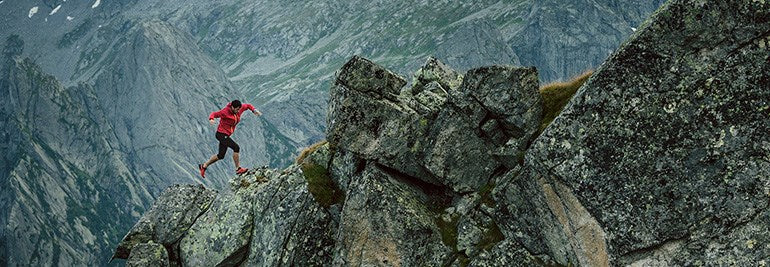
Ready for adventure in 2016
Suunto is proud to work with many amazing athletes and adventurers from all over the world, including our global ambassadors. We caught up with some of them to ask about the highlights of 2015 and what’s happening for them in 2016.
Speed alpinist Ueli Steck – the Swiss Machine
Highlights: Retaking the speed record for climbing Eiger was one of Ueli’s most satisying moments in 2015. Climbing all 82 of the 4000 m mountains in the Alps in a couple of months was also a great and liberating experience for him. His goals for 2016: To climb a new route on 8027 m Shishapangma’s south face, to take on some ultra distance trail races over summer, to keep moving physically and to continue developing his skill set as an alpinist.In one word, Ueli feels: “Great!”
© Ueli Steck
Mountain athlete Kilian Jornet
Highlight: Enjoying everyday, achieving great results and staying versatile in all distances and disciplines is what Kilian is most pleased with in 2015. His goals for 2016: First, it’s the ski mountaineering world cup. Then, the big project is attempting a world record speed ascent on Everest over summer as part of his Summits Of My Life project and, finally, some trail races. “To wake up, see a mountain every single day and go for it!” he says is his main motivation for 2016. In one word, Kilian is feeling: “Excited!”
© Kilian Jornet
Underwater explorer Jill Heinerth
Highlight: Being a TED presenter at the annual TED Youth broadcast in New York City was one of Jill’s proudest moments in 2015. Her talk reached more than 100,000 young people worldwide. Her goals for 2016: To slow down a little and enjoy her second passion in life – cycling. Aside from riding trails in Ontario, Jill and her husband hope to make cycle trip across the US, from Florida to their home in Canada. Jill is also returning to Newfoundland to explore a flooded iron ore mine and also WW2 shipwrecks. One word, Jill is feeling: “Excited!”
Triathlete Åsa Lundstrom
Highlight: Receiving emails from fans telling her that she has been an inspiration to them is one of Asa’s most rewarding experiences in 2015. Her goals for 2016: To place in the top 10 of women at the Ironman World Championships 2016, plus smaller goals for each discipline, and to be on the podium at every race she competes in. In one word, Asa is feeling: “Fortunate.”
© Orca
Backcountry skier Greg Hill
Highlight: For Greg, 2015 has been a year of rehabilitation after a serious injury in 2014. He turned 40 this year and is proud of where he’s at in life. “To be happily married, with two great kids, a cosy house and a reputation for being a solid mountain adventurer – it's all I could I'd ever ask for,” he says.His 2016 goals: To get as strong as he has ever been, some big 40,000 ft (12200 m) days in the mountains to celebrate his 40th, and speed traversing his local mountain range. The 200 km plus traverse normally requires two 10 day trips, but Greg aims to do it in two to three days. In one word, Greg is feeling: “Energized."
Mountain athlete Emelie Forsberg
Highlights: The fact that she still loves running, skiing and mountaineering as much as she does after years of it being her "work" is something Emelie is really happy about. Her four skyrunning victories and setting a new record at the Mount Marathon Race in Alaska were also satisfying achievements. Her goals for 2016: To become a faster and more all-round runner.In two words, Emelie is feeling: “Super excited!”
© Selu Vega-Transvulcania
MAIN IMAGE: © Jordi Saragossa
